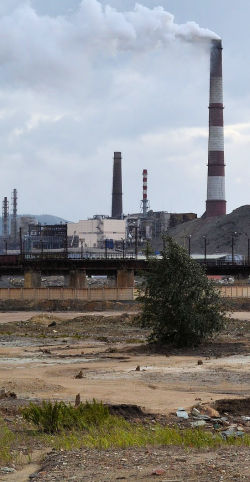Eurachem Blog
Eurachem's sampling uncertainty guidance supports land land remediation and regeneration

Ecosystem restoration depends fundamentally on a sufficiently effective measurement of the current state of the ecosystem. Such measurements enable both the design of an effective method of restoration and also the monitoring of the extent to which the restoration has been effective. Contaminated land measurements often show large uncertainties arising from sampling effects, and a good understanding of the uncertainty is important for properly informed risk analysis.
In the Eurachem Guide on measurement uncertainty arising from sampling [1], there is a worked example of how to estimate the uncertainty of measurements of lead in top soil that were made at a contaminated site near Heathrow Airport, London. Contamination of land is often very uneven because of how it arises, and this heterogeneity causes uncertainty in the measurements of contaminant levels. The Guide explains how 100 samples were taken at this site, but 10 of the samples were taken twice in what is called the ‘duplicate method’. These duplicate samples were used to estimate the uncertainty of the measurements of lead contamination, which is caused largely by the heterogeneity of the metal distribution.
Effective restoration of the soil requires a map of the concentration of the contamination across the whole site, and an estimate of its uncertainty. One sustainable option of ecosystem restoration, called phytoremediation, uses a particular plant species which is planted across the site in order to take up the metal from the soil into the plant. Once the metal is taken up into the plants, they can be harvested and the metal removed from the site, and sometimes the metal recovered for recycling. The ‘duplicate method’ described in the Eurachem Guide also gives an estimate of the heterogeneity, at the meter scale that affects the plant roots [2]. Research has shown that knowing the heterogeneity of the metal distribution at the scale that effects individual plants, is important for predicting and maximising the uptake of several toxic metals by these plants. [3]
Once the concentration of the metals in the soil has been significantly reduced, by techniques such as phytoremediation, then a much wider range of plants and animals can thrive on the land, contributing to the restoration of the whole ecosystem.
Further reading
- Ramsey M.H., Ellison S. L. R., and Rostron P.(eds.) (2019) Eurachem/EUROLAB/ CITAC/Nordtest/ AMC Guide: Measurement uncertainty arising from sampling: a guide to methods and approach, Second Edition, Eurachem, ISBN 978-0-948926-35-8 http://www.eurachem.org/
- Ramsey M.H., Grace Solomon-Wisdom G.O. and Argyraki A. (2013) Evaluation of in situ heterogeneity of elements in solids: implications for analytical geochemistry. Geostandards and Geoanalytical Research, 37, 4, 379-391. https://doi.org/10.1111/j.1751-908X.2013.00236.x
- Solomon-Wisdom, G.O., Ramsey, M.H. and John, E.A. (2015) The Effects of More Realistic Forms of Lead Heterogeneity in Soil on Uptake, Biomass and Root Response of Two Brassica Species. Advances in Research, 5(1): 1-26, 2015 http://dx.doi.org/10.9734/AIR/2015/17975
- Details
- Published: Thursday, 03 June 2021 21:31

